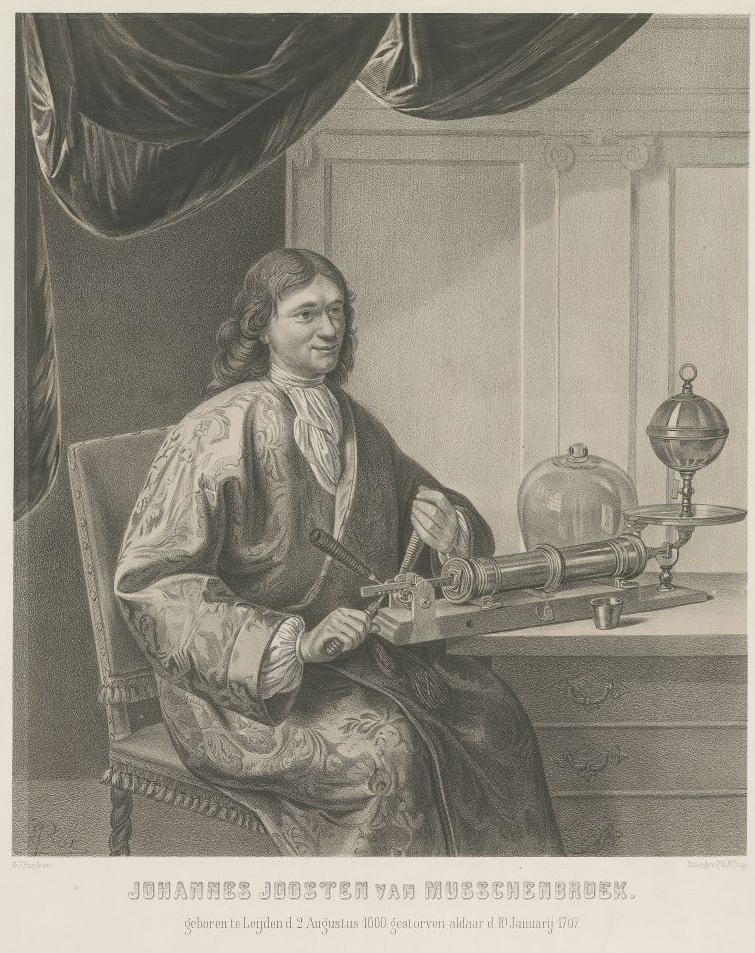Johannes Joosten van Musschenbroek (1660-1707)

The Musschenbroeks were Flemish immigrants who moved to Rotterdam in the early 1600s. Adriaen Joosten (1663) then moved to Leiden where he started a brass foundry. They produced a range of products including church candlesticks but because their domestic oil lamps were so popular, they adopted a lighted lamp as their shop sign.
During the 1660s, under the leadership of Samuel (1640-1681), the grandson of Adriaen, a branch of the family business began to specialise on scientific and medical instruments and gained a reputation for making some of the finest instruments in Europe. Among Samuel’s most famous products were vacuum pumps, telescopes and microscopes as well as special tools required by the medical students. When he died, at the age of 41, his younger brother Johannes Joosten van Musschenbroek (2 August 1660 – 10 January 1707) took over the business.
Johannes made instruments for, among others Reinier de Graaf, Antoni van Leeuwenhoek and Christiaan Huygens. Because of his success, Johannes could afford to buy a home on the famous Rapenburg in Leiden. Johannes had two sons, Jan (1687-1748) and Petrus (1692-1761). Jan took over the instrument workshop and ran it with great success. Among other things, Jan is credited with inventing the magic lantern. His friendship with Willem Jacob ‘s Gravesande was one of the factors that spread the famous company internationally because ‘s Gravesande used images of Van Musschenbroek equipment to illustrate his famous textbooks. 6 months after his death, his books and instruments were sold by auction and the instruments-making business came to an end.
Petrus became Professor of mathematics, physics, astronomy, and medical science at Leiden University.
Nowadays, Van Musschenbroek instruments are very rare. They can be identified by an engraving of an Oriental brass lamp and the crossed keys of the Leiden city arms.
Simple compass microscope
VAN MUSSCHENBROEK
1690-1750